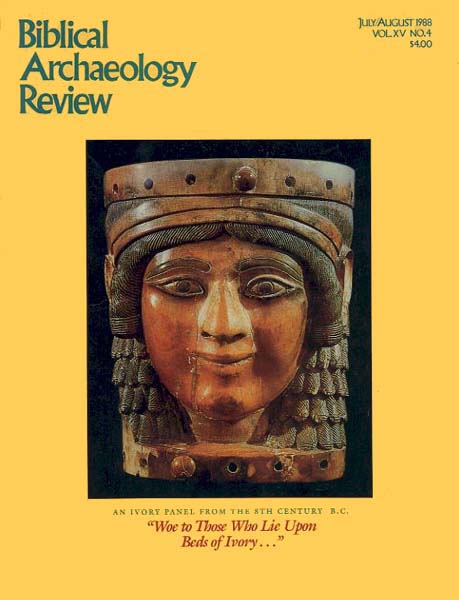Image Details

Scala/Art Resource, New York
ON THE COVER: This striking portrait emerged from the bottom of a well in Nimrud, in present-day Iraq. Carved from an unusually large elephant’s tusk, this eighth-century B.C. ivory mask originally adorned a piece of furniture. The six-inch-high image may represent the Assyrian goddess Ishtar, called Astarte by the Phoenicians. Elegant ivory ornaments came under fire from the prophet Amos, who condemned their role in a pagan ritual called the marzeah . See “The Marzeah Amos Denounces—Using Archaeology to Interpret a Biblical Text.”
